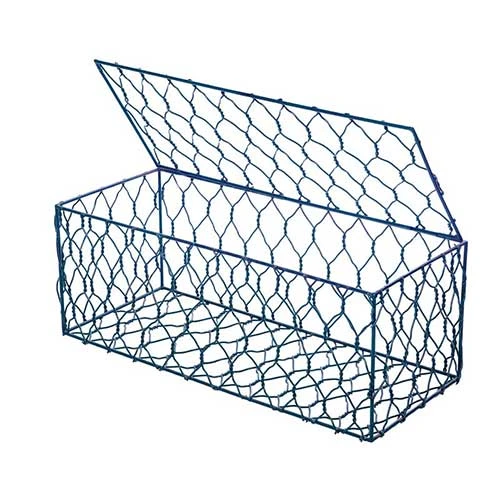-
 Phone:
Phone: -
 Email:
Email:

Comparing Razor Wire and Barbed Wire for Security and Fencing Solutions
Understanding Razor Wire and Barbed Wire A Comprehensive Overview
When discussing security measures, two terms often come up razor wire and barbed wire. Both materials serve the critical function of deterring intrusion and enhancing safety, yet they differ significantly in design, application, and effectiveness. This article will explore these two types of fencing materials, their features, and their respective uses in various contexts.
Barbed Wire A Classic Security Solution
Barbed wire, invented in the late 19th century, has long been a staple in agricultural settings. It consists of strands of wire twisted together, with sharp points or barbs spaced at intervals along the length. Its primary purpose is to keep livestock contained while preventing unauthorized entry into certain areas.
The effectiveness of barbed wire lies in its simplicity. The sharp barbs can inflict pain, deterring potential intruders. However, barbed wire does come with its limitations. While it can discourage casual trespassers, it might not deter someone determined to breach the barrier. For this reason, barbed wire is often used in conjunction with other security measures.
Razor Wire A More Intimidating Option
Razor wire, on the other hand, is a modern evolution of barbed wire, designed specifically for high-security applications. It features sharp, blade-like edges that can cause severe injury to anyone attempting to climb over it. Razor wire is typically manufactured in rolls, similar to barbed wire, but the sharp edges are much more effective at preventing entry.
One notable advantage of razor wire is its psychological impact. The mere sight of razor wire can dissuade many potential intruders, as it signals a higher level of security. In environments such as prisons, military installations, and sensitive government buildings, razor wire serves as both a physical and psychological barrier.
razor wire and barbed wire

Applications in Various Settings
Both types of wire fencing find use in numerous settings. Barbed wire is commonly employed in agricultural fields, residential properties, and even some industrial environments where the risk of unwanted animal entry or trespassing is present. It can be easily installed and maintained, making it a popular choice among farmers and property owners.
Conversely, razor wire finds its place in high-security areas. It is commonly seen in correctional facilities, military bases, and secure government complexes. Due to its effective deterrent capabilities, razor wire can also be found topping fences surrounding valuable assets, such as power plants, data centers, and other critical infrastructure.
Legal and Ethical Considerations
While both barbed wire and razor wire can be effective deterrents, it is crucial for property owners to consider the legal and ethical implications of using such security measures. In some regions, regulations dictate how and where these materials can be used, particularly razor wire, due to its potential for causing serious injury or death. It is essential to balance security needs with the safety of individuals who may inadvertently come into contact with such barriers.
Conclusion
In conclusion, both razor wire and barbed wire serve essential roles in securing property and protecting assets. While barbed wire remains a cost-effective solution for less sensitive areas, razor wire offers heightened security for high-risk environments. Understanding their differences, applications, and implications is key for property owners making decisions about fencing options. No matter the choice, it is vital to ensure that safety and legal standards are prioritized in the implementation of these security measures. Ultimately, the right choice will depend on the specific security needs of the property in question, as well as the level of deterrence required.
-
Wire Mesh for Every Need: A Practical SolutionNewsJul.25,2025
-
Steel Fences: Durable, Secure, and Stylish OptionsNewsJul.25,2025
-
Roll Top Fencing: A Smart Solution for Safety and SecurityNewsJul.25,2025
-
Cattle Farm Fencing Solutions for Maximum SecurityNewsJul.25,2025
-
Affordable Iron Binding Wire SolutionsNewsJul.25,2025
-
Affordable Galvanized Wire SolutionsNewsJul.25,2025
-
Wire Hanger Recycling IdeasNewsJul.25,2025








